-
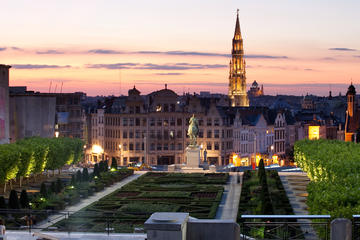 Brussels City Hall (Hotel de Ville)
Brussels City Hall (Hotel de Ville) Dominating the Gothic and Baroque mansions of Brussels’s glorious cobbled Grand-Place from the south side, the spectacular City Hall has a flamboyant Gothic façade and more restrained classical additions lying around a courtyard behind it.Begun in 1402, this bel
Brussels City Hall (Hotel de Ville)
Brussels City Hall (Hotel de Ville) Dominating the Gothic and Baroque mansions of Brussels’s glorious cobbled Grand-Place from the south side, the spectacular City Hall has a flamboyant Gothic façade and more restrained classical additions lying around a courtyard behind it.Begun in 1402, this bel
-
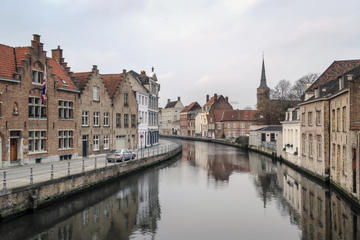 Bruges Waterways
Bruges Waterways Bruges is often referred to as the Venice of the north due to its many canals. Though the city is located inland, it is close enough to the coast that several floods resulted in the formation of these waterways. This gave Bruges access to the sea, and the city became an important
Bruges Waterways
Bruges Waterways Bruges is often referred to as the Venice of the north due to its many canals. Though the city is located inland, it is close enough to the coast that several floods resulted in the formation of these waterways. This gave Bruges access to the sea, and the city became an important
-
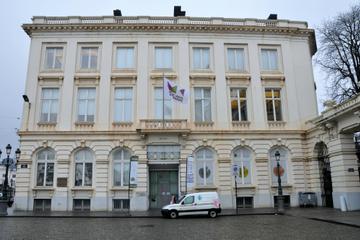 BELvue Museum
BELvue Museum Learn the history of a nation at Belgium’s BELvue Museum, housed in the 18th-century Bellvue Hotel in the center of Brussels. Trace the story of Belgium from the Belgian Revolution, through World Wars I and II, and in its royal and political progression as you walk through its 12 roo
BELvue Museum
BELvue Museum Learn the history of a nation at Belgium’s BELvue Museum, housed in the 18th-century Bellvue Hotel in the center of Brussels. Trace the story of Belgium from the Belgian Revolution, through World Wars I and II, and in its royal and political progression as you walk through its 12 roo
-
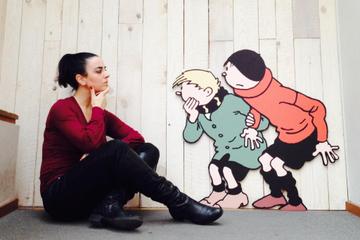 Belgian Centre for Comic Strip Art
Belgian Centre for Comic Strip Art This exploration of comic strips as art is appropriately housed in an Art Nouveau building designed by Brussels’ most famous architect, Victor Horta. It traces the history of first comic strips through to the evolution of European comic books and present day piec
Belgian Centre for Comic Strip Art
Belgian Centre for Comic Strip Art This exploration of comic strips as art is appropriately housed in an Art Nouveau building designed by Brussels’ most famous architect, Victor Horta. It traces the history of first comic strips through to the evolution of European comic books and present day piec
-
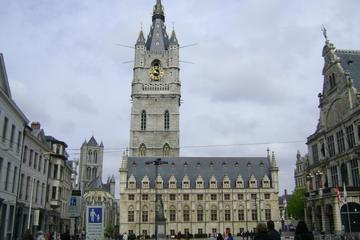 Belfry and Lakenhalle (Bell Tower and Cloth Hall)
Belfry and Lakenhalle (Bell Tower and Cloth Hall) Book-ending the square of Botermarkt with St Bavo’s Cathedral, the ornate UNESCO-listed Belfry and the Cloth Hall at its feet stand testament to the great wealth of Ghent in the 14th century; built with money from members of the wool and textiles g
Belfry and Lakenhalle (Bell Tower and Cloth Hall)
Belfry and Lakenhalle (Bell Tower and Cloth Hall) Book-ending the square of Botermarkt with St Bavo’s Cathedral, the ornate UNESCO-listed Belfry and the Cloth Hall at its feet stand testament to the great wealth of Ghent in the 14th century; built with money from members of the wool and textiles g
-
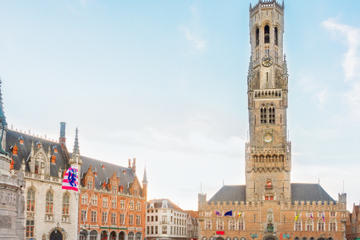 Belfry (Belfort)
Belfry (Belfort) Dominating the city skyline from all angles, the striking, 83-meter high Belfry (Belfort) is one of Bruges’ most iconic landmarks, standing proud over the central Market Square. Dating back to 1240, the historic bell tower has undergone a number of changes over the years, damaged
Belfry (Belfort)
Belfry (Belfort) Dominating the city skyline from all angles, the striking, 83-meter high Belfry (Belfort) is one of Bruges’ most iconic landmarks, standing proud over the central Market Square. Dating back to 1240, the historic bell tower has undergone a number of changes over the years, damaged
-
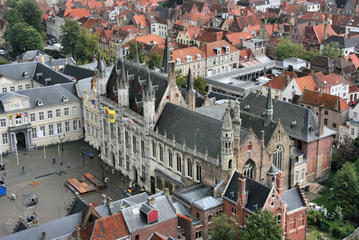 Basilica of the Holy Blood (Heilig-Bloedbasiliek)
Basilica of the Holy Blood (Heilig-Bloedbasiliek) The Basilica of the Holy Blood (Heilig-Bloedbasiliek) is a church in Brugge, Belgium that has what is believed to be the blood of Jesus Christ. The basilica was once a chapel built in the 12th century, and it has been added to and rebuilt over the
Basilica of the Holy Blood (Heilig-Bloedbasiliek)
Basilica of the Holy Blood (Heilig-Bloedbasiliek) The Basilica of the Holy Blood (Heilig-Bloedbasiliek) is a church in Brugge, Belgium that has what is believed to be the blood of Jesus Christ. The basilica was once a chapel built in the 12th century, and it has been added to and rebuilt over the
-
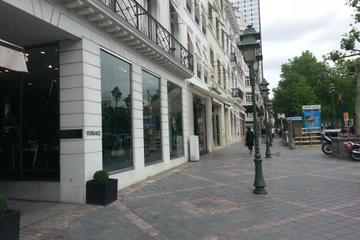 Avenue Louise
Avenue Louise Walking down the tree-lined Avenue Louise is the best way to experience the city’s best in luxury and fashion. Belgian and international designer labels line the elegant thoroughfare, which runs adjacent to the Boulevard de Waterloo. Here you’ll find upscale clothing shops for both w
Avenue Louise
Avenue Louise Walking down the tree-lined Avenue Louise is the best way to experience the city’s best in luxury and fashion. Belgian and international designer labels line the elegant thoroughfare, which runs adjacent to the Boulevard de Waterloo. Here you’ll find upscale clothing shops for both w
-
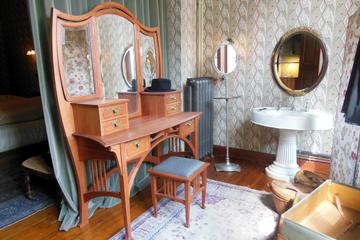 Autrique House
Autrique House La Maison Autrique was the first house built by Belgian architect Victor Horta, with early elements of his famous Art Nouveau style apparent in the design details. Although the entry and ground floor reflects the classic architectural style of the 19th century, when it was built, th
Autrique House
Autrique House La Maison Autrique was the first house built by Belgian architect Victor Horta, with early elements of his famous Art Nouveau style apparent in the design details. Although the entry and ground floor reflects the classic architectural style of the 19th century, when it was built, th
-
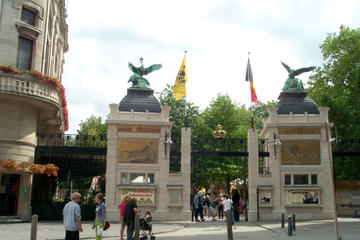 Antwerp Zoo (Dierentuin)
Antwerp Zoo (Dierentuin) Occupying a 26-acre (10.5-hectare) site behind the city’s grandiose railway station, Antwerp Zoo was built in 1843 – when it was outside the city walls – in colorful Art Nouveau style; as well as being one of the oldest zoos in the world, it must be the only one where the
Antwerp Zoo (Dierentuin)
Antwerp Zoo (Dierentuin) Occupying a 26-acre (10.5-hectare) site behind the city’s grandiose railway station, Antwerp Zoo was built in 1843 – when it was outside the city walls – in colorful Art Nouveau style; as well as being one of the oldest zoos in the world, it must be the only one where the
-
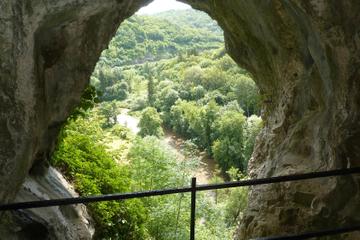 Parc de Furfooz
Parc de Furfooz Parc de Furfooz is a nature park in the southern part of the Walloon region of Belgium. It is a great place to explore some of the archaeological and geological wonders of Belgium. There are several nature walks through the park, including a 2.5 mile family walk. The paths in the p
Parc de Furfooz
Parc de Furfooz Parc de Furfooz is a nature park in the southern part of the Walloon region of Belgium. It is a great place to explore some of the archaeological and geological wonders of Belgium. There are several nature walks through the park, including a 2.5 mile family walk. The paths in the p
-
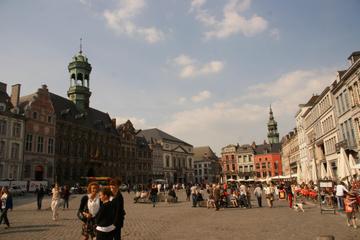 Mons
Mons All-too-often overlooked in favor of its bigger and bolder neighbors, Mons is a city with a timeless charm and its stint as a European Capital of Culture in 2015 has already earned it a prime spot on Belgium’s tourist trail. A former mining town and the site of the notorious Battle of Mons in
Mons
Mons All-too-often overlooked in favor of its bigger and bolder neighbors, Mons is a city with a timeless charm and its stint as a European Capital of Culture in 2015 has already earned it a prime spot on Belgium’s tourist trail. A former mining town and the site of the notorious Battle of Mons in
-
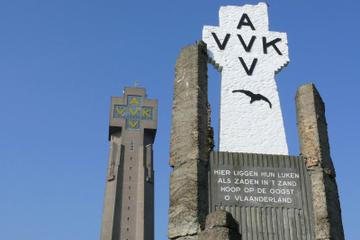 Yser Tower (IJzertoren)
Yser Tower (IJzertoren) Yser Tower is a memorial honoring the Flemish soldiers who died during World War I. It is the tallest peace monument in Europe and houses a museum and a chapel. At the start of the war, King Albert of Belgium urged the Flemish and Walloon populations to come together to fig
Yser Tower (IJzertoren)
Yser Tower (IJzertoren) Yser Tower is a memorial honoring the Flemish soldiers who died during World War I. It is the tallest peace monument in Europe and houses a museum and a chapel. At the start of the war, King Albert of Belgium urged the Flemish and Walloon populations to come together to fig
-
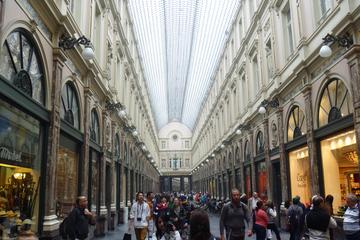 Royal Galleries (Les Galeries St-Hubert)
Royal Galleries (Les Galeries St-Hubert) The Royal Saint Hubert Galleries are a series of shops and restaurants in Brussels that are covered by panes of glass. They were designed by the architect Jean-Pierre Cluysenaer in 1847 and are often referred to as the umbrella of Brussels. The galleries ar
Royal Galleries (Les Galeries St-Hubert)
Royal Galleries (Les Galeries St-Hubert) The Royal Saint Hubert Galleries are a series of shops and restaurants in Brussels that are covered by panes of glass. They were designed by the architect Jean-Pierre Cluysenaer in 1847 and are often referred to as the umbrella of Brussels. The galleries ar
-
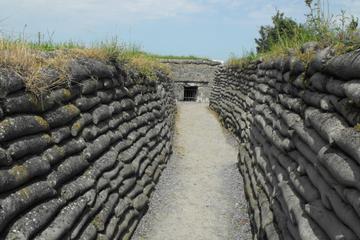 Trench of Death
Trench of Death The Trench of Death was one of the most dangerous locations of Belgian troops on the Western Front during World War I. It is a half-mile long network of revetments, saps and dug-outs near Diksmuide in Flanders, and it was only 55 yards from a German bunker. The Belgian Army was her
Trench of Death
Trench of Death The Trench of Death was one of the most dangerous locations of Belgian troops on the Western Front during World War I. It is a half-mile long network of revetments, saps and dug-outs near Diksmuide in Flanders, and it was only 55 yards from a German bunker. The Belgian Army was her
-
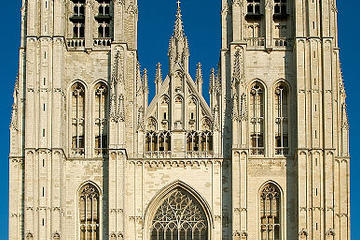 St Michael and St Gudula Cathedral
St Michael and St Gudula Cathedral It took 300 years to complete the St. Michael and St. Gudula Cathedral and its architecture spans styles from Romanesque to Gothic to Renaissance. The Renaissance stained-glass windows are amazing and fill the cathedral with light. Inside, the chapel is not overl
St Michael and St Gudula Cathedral
St Michael and St Gudula Cathedral It took 300 years to complete the St. Michael and St. Gudula Cathedral and its architecture spans styles from Romanesque to Gothic to Renaissance. The Renaissance stained-glass windows are amazing and fill the cathedral with light. Inside, the chapel is not overl
-
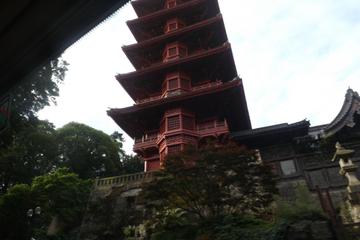 Chinese and Japanese Towers
Chinese and Japanese Towers King Leopold II wanted famous structures from around the world represented on his royal estate at Laeken, and architect Alexandre Marcel undertook the project with these two towers representing Japan and China. It is said that King Leopold was inspired by his visit to t
Chinese and Japanese Towers
Chinese and Japanese Towers King Leopold II wanted famous structures from around the world represented on his royal estate at Laeken, and architect Alexandre Marcel undertook the project with these two towers representing Japan and China. It is said that King Leopold was inspired by his visit to t
-
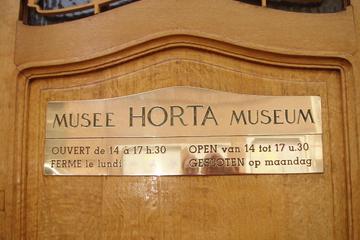 Horta Museum
Horta Museum The Horta Museum in Brussels, Belgium was once the home of the architect Victor Horta. Horta is considered the father of the Art Nouveau style of architecture, and his house is a fantastic example of this style. He built the house for his own use and lived there from 1901 to 1919. The
Horta Museum
Horta Museum The Horta Museum in Brussels, Belgium was once the home of the architect Victor Horta. Horta is considered the father of the Art Nouveau style of architecture, and his house is a fantastic example of this style. He built the house for his own use and lived there from 1901 to 1919. The
-
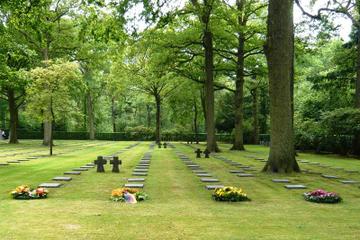 Vladslo German War Cemetery
Vladslo German War Cemetery The Vladslo German War Cemetery is a burial ground located near the village of Vladslo, Belgium, which is about 16 miles north of Ypres and 25 miles southwest of Brugge. By the end of World War I, German soldiers were buried all over Belgium, from single or group sites
Vladslo German War Cemetery
Vladslo German War Cemetery The Vladslo German War Cemetery is a burial ground located near the village of Vladslo, Belgium, which is about 16 miles north of Ypres and 25 miles southwest of Brugge. By the end of World War I, German soldiers were buried all over Belgium, from single or group sites
-
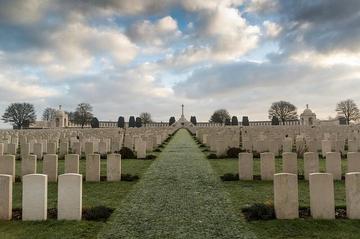 Tyne Cot Cemetery
Tyne Cot Cemetery The Tyne Cot Cemetery, located near Zonnebeke, Belgium, is the largest Commonwealth military cemetery in the world. It contains the graves of nearly 12,000 soldiers who died between October 1914 and September 1918 while fighting in World War I. Unfortunately about 70% of the peop
Tyne Cot Cemetery
Tyne Cot Cemetery The Tyne Cot Cemetery, located near Zonnebeke, Belgium, is the largest Commonwealth military cemetery in the world. It contains the graves of nearly 12,000 soldiers who died between October 1914 and September 1918 while fighting in World War I. Unfortunately about 70% of the peop
Total
660 -travel
FirstPage PreviousPage NextPage LastPage CurrentPage:
3/33 20-travel/Page GoTo Page:
 Brussels City Hall (Hotel de Ville)
Brussels City Hall (Hotel de Ville) Dominating the Gothic and Baroque mansions of Brussels’s glorious cobbled Grand-Place from the south side, the spectacular City Hall has a flamboyant Gothic façade and more restrained classical additions lying around a courtyard behind it.Begun in 1402, this bel
Brussels City Hall (Hotel de Ville)
Brussels City Hall (Hotel de Ville) Dominating the Gothic and Baroque mansions of Brussels’s glorious cobbled Grand-Place from the south side, the spectacular City Hall has a flamboyant Gothic façade and more restrained classical additions lying around a courtyard behind it.Begun in 1402, this bel
 Bruges Waterways
Bruges Waterways Bruges is often referred to as the Venice of the north due to its many canals. Though the city is located inland, it is close enough to the coast that several floods resulted in the formation of these waterways. This gave Bruges access to the sea, and the city became an important
Bruges Waterways
Bruges Waterways Bruges is often referred to as the Venice of the north due to its many canals. Though the city is located inland, it is close enough to the coast that several floods resulted in the formation of these waterways. This gave Bruges access to the sea, and the city became an important
 BELvue Museum
BELvue Museum Learn the history of a nation at Belgium’s BELvue Museum, housed in the 18th-century Bellvue Hotel in the center of Brussels. Trace the story of Belgium from the Belgian Revolution, through World Wars I and II, and in its royal and political progression as you walk through its 12 roo
BELvue Museum
BELvue Museum Learn the history of a nation at Belgium’s BELvue Museum, housed in the 18th-century Bellvue Hotel in the center of Brussels. Trace the story of Belgium from the Belgian Revolution, through World Wars I and II, and in its royal and political progression as you walk through its 12 roo
 Belgian Centre for Comic Strip Art
Belgian Centre for Comic Strip Art This exploration of comic strips as art is appropriately housed in an Art Nouveau building designed by Brussels’ most famous architect, Victor Horta. It traces the history of first comic strips through to the evolution of European comic books and present day piec
Belgian Centre for Comic Strip Art
Belgian Centre for Comic Strip Art This exploration of comic strips as art is appropriately housed in an Art Nouveau building designed by Brussels’ most famous architect, Victor Horta. It traces the history of first comic strips through to the evolution of European comic books and present day piec
 Belfry and Lakenhalle (Bell Tower and Cloth Hall)
Belfry and Lakenhalle (Bell Tower and Cloth Hall) Book-ending the square of Botermarkt with St Bavo’s Cathedral, the ornate UNESCO-listed Belfry and the Cloth Hall at its feet stand testament to the great wealth of Ghent in the 14th century; built with money from members of the wool and textiles g
Belfry and Lakenhalle (Bell Tower and Cloth Hall)
Belfry and Lakenhalle (Bell Tower and Cloth Hall) Book-ending the square of Botermarkt with St Bavo’s Cathedral, the ornate UNESCO-listed Belfry and the Cloth Hall at its feet stand testament to the great wealth of Ghent in the 14th century; built with money from members of the wool and textiles g
 Belfry (Belfort)
Belfry (Belfort) Dominating the city skyline from all angles, the striking, 83-meter high Belfry (Belfort) is one of Bruges’ most iconic landmarks, standing proud over the central Market Square. Dating back to 1240, the historic bell tower has undergone a number of changes over the years, damaged
Belfry (Belfort)
Belfry (Belfort) Dominating the city skyline from all angles, the striking, 83-meter high Belfry (Belfort) is one of Bruges’ most iconic landmarks, standing proud over the central Market Square. Dating back to 1240, the historic bell tower has undergone a number of changes over the years, damaged
 Basilica of the Holy Blood (Heilig-Bloedbasiliek)
Basilica of the Holy Blood (Heilig-Bloedbasiliek) The Basilica of the Holy Blood (Heilig-Bloedbasiliek) is a church in Brugge, Belgium that has what is believed to be the blood of Jesus Christ. The basilica was once a chapel built in the 12th century, and it has been added to and rebuilt over the
Basilica of the Holy Blood (Heilig-Bloedbasiliek)
Basilica of the Holy Blood (Heilig-Bloedbasiliek) The Basilica of the Holy Blood (Heilig-Bloedbasiliek) is a church in Brugge, Belgium that has what is believed to be the blood of Jesus Christ. The basilica was once a chapel built in the 12th century, and it has been added to and rebuilt over the
 Avenue Louise
Avenue Louise Walking down the tree-lined Avenue Louise is the best way to experience the city’s best in luxury and fashion. Belgian and international designer labels line the elegant thoroughfare, which runs adjacent to the Boulevard de Waterloo. Here you’ll find upscale clothing shops for both w
Avenue Louise
Avenue Louise Walking down the tree-lined Avenue Louise is the best way to experience the city’s best in luxury and fashion. Belgian and international designer labels line the elegant thoroughfare, which runs adjacent to the Boulevard de Waterloo. Here you’ll find upscale clothing shops for both w
 Autrique House
Autrique House La Maison Autrique was the first house built by Belgian architect Victor Horta, with early elements of his famous Art Nouveau style apparent in the design details. Although the entry and ground floor reflects the classic architectural style of the 19th century, when it was built, th
Autrique House
Autrique House La Maison Autrique was the first house built by Belgian architect Victor Horta, with early elements of his famous Art Nouveau style apparent in the design details. Although the entry and ground floor reflects the classic architectural style of the 19th century, when it was built, th
 Antwerp Zoo (Dierentuin)
Antwerp Zoo (Dierentuin) Occupying a 26-acre (10.5-hectare) site behind the city’s grandiose railway station, Antwerp Zoo was built in 1843 – when it was outside the city walls – in colorful Art Nouveau style; as well as being one of the oldest zoos in the world, it must be the only one where the
Antwerp Zoo (Dierentuin)
Antwerp Zoo (Dierentuin) Occupying a 26-acre (10.5-hectare) site behind the city’s grandiose railway station, Antwerp Zoo was built in 1843 – when it was outside the city walls – in colorful Art Nouveau style; as well as being one of the oldest zoos in the world, it must be the only one where the
 Parc de Furfooz
Parc de Furfooz Parc de Furfooz is a nature park in the southern part of the Walloon region of Belgium. It is a great place to explore some of the archaeological and geological wonders of Belgium. There are several nature walks through the park, including a 2.5 mile family walk. The paths in the p
Parc de Furfooz
Parc de Furfooz Parc de Furfooz is a nature park in the southern part of the Walloon region of Belgium. It is a great place to explore some of the archaeological and geological wonders of Belgium. There are several nature walks through the park, including a 2.5 mile family walk. The paths in the p
 Mons
Mons All-too-often overlooked in favor of its bigger and bolder neighbors, Mons is a city with a timeless charm and its stint as a European Capital of Culture in 2015 has already earned it a prime spot on Belgium’s tourist trail. A former mining town and the site of the notorious Battle of Mons in
Mons
Mons All-too-often overlooked in favor of its bigger and bolder neighbors, Mons is a city with a timeless charm and its stint as a European Capital of Culture in 2015 has already earned it a prime spot on Belgium’s tourist trail. A former mining town and the site of the notorious Battle of Mons in
 Yser Tower (IJzertoren)
Yser Tower (IJzertoren) Yser Tower is a memorial honoring the Flemish soldiers who died during World War I. It is the tallest peace monument in Europe and houses a museum and a chapel. At the start of the war, King Albert of Belgium urged the Flemish and Walloon populations to come together to fig
Yser Tower (IJzertoren)
Yser Tower (IJzertoren) Yser Tower is a memorial honoring the Flemish soldiers who died during World War I. It is the tallest peace monument in Europe and houses a museum and a chapel. At the start of the war, King Albert of Belgium urged the Flemish and Walloon populations to come together to fig
 Royal Galleries (Les Galeries St-Hubert)
Royal Galleries (Les Galeries St-Hubert) The Royal Saint Hubert Galleries are a series of shops and restaurants in Brussels that are covered by panes of glass. They were designed by the architect Jean-Pierre Cluysenaer in 1847 and are often referred to as the umbrella of Brussels. The galleries ar
Royal Galleries (Les Galeries St-Hubert)
Royal Galleries (Les Galeries St-Hubert) The Royal Saint Hubert Galleries are a series of shops and restaurants in Brussels that are covered by panes of glass. They were designed by the architect Jean-Pierre Cluysenaer in 1847 and are often referred to as the umbrella of Brussels. The galleries ar
 Trench of Death
Trench of Death The Trench of Death was one of the most dangerous locations of Belgian troops on the Western Front during World War I. It is a half-mile long network of revetments, saps and dug-outs near Diksmuide in Flanders, and it was only 55 yards from a German bunker. The Belgian Army was her
Trench of Death
Trench of Death The Trench of Death was one of the most dangerous locations of Belgian troops on the Western Front during World War I. It is a half-mile long network of revetments, saps and dug-outs near Diksmuide in Flanders, and it was only 55 yards from a German bunker. The Belgian Army was her
 St Michael and St Gudula Cathedral
St Michael and St Gudula Cathedral It took 300 years to complete the St. Michael and St. Gudula Cathedral and its architecture spans styles from Romanesque to Gothic to Renaissance. The Renaissance stained-glass windows are amazing and fill the cathedral with light. Inside, the chapel is not overl
St Michael and St Gudula Cathedral
St Michael and St Gudula Cathedral It took 300 years to complete the St. Michael and St. Gudula Cathedral and its architecture spans styles from Romanesque to Gothic to Renaissance. The Renaissance stained-glass windows are amazing and fill the cathedral with light. Inside, the chapel is not overl
 Chinese and Japanese Towers
Chinese and Japanese Towers King Leopold II wanted famous structures from around the world represented on his royal estate at Laeken, and architect Alexandre Marcel undertook the project with these two towers representing Japan and China. It is said that King Leopold was inspired by his visit to t
Chinese and Japanese Towers
Chinese and Japanese Towers King Leopold II wanted famous structures from around the world represented on his royal estate at Laeken, and architect Alexandre Marcel undertook the project with these two towers representing Japan and China. It is said that King Leopold was inspired by his visit to t
 Horta Museum
Horta Museum The Horta Museum in Brussels, Belgium was once the home of the architect Victor Horta. Horta is considered the father of the Art Nouveau style of architecture, and his house is a fantastic example of this style. He built the house for his own use and lived there from 1901 to 1919. The
Horta Museum
Horta Museum The Horta Museum in Brussels, Belgium was once the home of the architect Victor Horta. Horta is considered the father of the Art Nouveau style of architecture, and his house is a fantastic example of this style. He built the house for his own use and lived there from 1901 to 1919. The
 Vladslo German War Cemetery
Vladslo German War Cemetery The Vladslo German War Cemetery is a burial ground located near the village of Vladslo, Belgium, which is about 16 miles north of Ypres and 25 miles southwest of Brugge. By the end of World War I, German soldiers were buried all over Belgium, from single or group sites
Vladslo German War Cemetery
Vladslo German War Cemetery The Vladslo German War Cemetery is a burial ground located near the village of Vladslo, Belgium, which is about 16 miles north of Ypres and 25 miles southwest of Brugge. By the end of World War I, German soldiers were buried all over Belgium, from single or group sites
 Tyne Cot Cemetery
Tyne Cot Cemetery The Tyne Cot Cemetery, located near Zonnebeke, Belgium, is the largest Commonwealth military cemetery in the world. It contains the graves of nearly 12,000 soldiers who died between October 1914 and September 1918 while fighting in World War I. Unfortunately about 70% of the peop
Tyne Cot Cemetery
Tyne Cot Cemetery The Tyne Cot Cemetery, located near Zonnebeke, Belgium, is the largest Commonwealth military cemetery in the world. It contains the graves of nearly 12,000 soldiers who died between October 1914 and September 1918 while fighting in World War I. Unfortunately about 70% of the peop